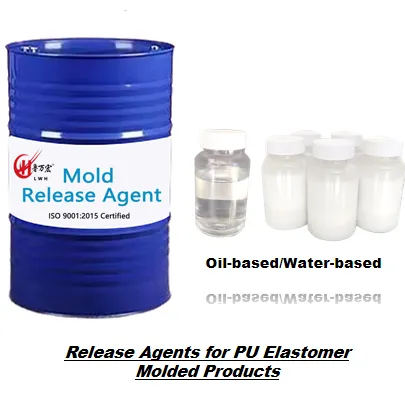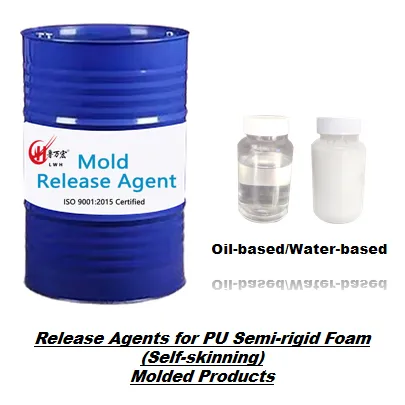Advanced Surface Quality Enhancement Through Industrial Release Agents
The pursuit of perfect surface quality in manufacturing has long been a critical challenge across industries. Release agents play a fundamental role in achieving smooth, defect-free surfaces in molding and casting processes. When properly selected and applied, these specialized compounds create an essential barrier between the mold and the material being formed, ensuring clean release and superior surface finish. Understanding how release agents work and their impact on surface quality is crucial for manufacturers aiming to produce high-quality products consistently.
Understanding Release Agent Technology
Chemical Composition and Functionality
Modern release agents are sophisticated formulations designed to perform multiple functions simultaneously. At their core, these products contain carefully selected active ingredients that create a microscopic barrier film between the mold surface and the manufactured part. The chemical composition typically includes a blend of release compounds, wetting agents, and carriers that work together to ensure optimal surface coverage and release properties.
The effectiveness of a release agent depends largely on its ability to form a stable, continuous film that maintains its integrity under processing conditions. Advanced formulations incorporate specialized polymers and surface-active agents that enhance adhesion to the mold while preventing unwanted interaction with the molded material.
Surface Science Principles
The interaction between release agents and surfaces involves complex physical and chemical mechanisms. Surface tension, wettability, and molecular adhesion all play crucial roles in determining how well a release agent will perform. The most effective products achieve an optimal balance of these properties, creating a surface that repels the molded material while maintaining stability under heat and pressure.
Understanding these fundamental principles helps manufacturers select release agents that will deliver the best results for their specific applications. The science behind surface interactions continues to evolve, leading to increasingly sophisticated formulations that offer improved performance and reliability.
Surface Quality Optimization Process
Application Techniques
Proper application of release agents is critical for achieving optimal surface quality. The method of application must ensure even coverage while avoiding excess accumulation that could lead to surface defects. Advanced spray systems, automated applicators, and precise dosing equipment help maintain consistency in the application process.
Manufacturers must consider factors such as application temperature, coating thickness, and drying time to achieve the best results. Regular maintenance of application equipment and careful monitoring of process parameters help ensure consistent performance and surface quality.
Quality Control Measures
Implementing robust quality control procedures is essential for maintaining consistent surface quality when using release agents. This includes regular inspection of treated surfaces, monitoring of release agent consumption, and documentation of process parameters. Advanced testing methods such as surface tension measurement and release force testing provide objective data for process optimization.
Quality control systems should include procedures for evaluating both the release agent performance and the final product surface quality. Regular calibration of measurement equipment and training of operators ensure reliable quality assessment.

Environmental and Safety Considerations
Sustainable Formulations
Modern release agents are increasingly being developed with environmental sustainability in mind. Water-based formulations and products with low volatile organic compound (VOC) content offer environmentally friendly alternatives to traditional solvent-based release agents. These eco-friendly options maintain high performance standards while reducing environmental impact.
Manufacturers are also focusing on biodegradability and reduced toxicity in their release agent formulations. This trend reflects growing awareness of environmental responsibility and regulatory requirements for sustainable manufacturing practices.
Workplace Safety Protocols
Safe handling and application of release agents require comprehensive workplace safety protocols. This includes proper personal protective equipment, adequate ventilation systems, and training programs for operators. Regular safety audits and updates to handling procedures ensure ongoing protection of worker health and safety.
Documentation of safety procedures and maintenance of safety data sheets help organizations maintain compliance with regulatory requirements while protecting their workforce. Regular training updates keep workers informed about best practices and new safety protocols.
Future Trends and Innovations
Advanced Formulation Development
The future of release agent technology continues to evolve with new innovations in chemical engineering and materials science. Research focuses on developing formulations that offer improved performance, longer service life, and enhanced environmental compatibility. Smart release agents that respond to specific processing conditions are among the emerging technologies being explored.
Integration of nanotechnology and advanced polymer science is leading to next-generation release agents with superior surface quality enhancement capabilities. These developments promise to further improve manufacturing efficiency and product quality.
Digital Integration and Process Control
Industry 4.0 technologies are transforming how release agents are applied and monitored in manufacturing processes. Smart sensors and automated control systems enable real-time adjustment of application parameters to maintain optimal surface quality. Data analytics help identify trends and optimize process efficiency.
The integration of digital technologies with release agent application systems represents a significant advance in surface quality control. These innovations provide manufacturers with unprecedented levels of process control and quality assurance.
Frequently Asked Questions
How Often Should Release Agents Be Applied?
Application frequency depends on various factors including the specific manufacturing process, operating conditions, and type of release agent being used. Generally, release agents should be reapplied when signs of reduced effectiveness appear, such as difficulty in part removal or surface quality issues. Regular monitoring and establishment of application schedules based on production requirements ensure optimal performance.
What Impact Do Release Agents Have on Final Product Appearance?
When properly selected and applied, release agents contribute to superior surface finish, minimal defects, and consistent product appearance. They help prevent common issues such as sticking, marring, and surface blemishes. The right release agent can enhance gloss, texture, and overall aesthetic quality while maintaining dimensional accuracy.
Are Water-Based Release Agents as Effective as Solvent-Based Options?
Modern water-based release agents have been developed to match or exceed the performance of traditional solvent-based products. While they may require different application techniques and conditions, water-based formulations can provide excellent release properties and surface quality while offering environmental and safety advantages. The key is selecting the appropriate formulation for specific application requirements.

